Home »
Misc »
How to warm up for basketball
How to warm up for basketball
Dynamic Basketball Warm Up Guide (20 Drills and Exercises)
As a basketball coach, one of your responsibilities is making sure that your players are physically prepared before each game and practice.
One of the most important ways a player can prepare is with a proper basketball warm up.
Specifically, a dynamic stretching routine.
The reality is that a truly effective basketball warm up is overlooked by most players (especially at the youth level), which is why coaches need to make this a priority.
Everyone has likely seen the classic “stretching circle,” where one player or coach stands in the middle as the leader, and the other players circle around to follow.
While there is still merit to this method, most exercises done in this format are static stretches.
(A static stretch is one that focuses on stretching a muscle to its farthest point and then maintaining or holding that position)
In this article, we want to explain why your team should instead be getting ready with a dynamic stretching warm-up to prepare for practices and games.![]()
First, I’ll explain why this is important...
Why a Dynamic Warm Up is ImportantOne of the primary goals of using a dynamic stretching warm-up routine is to get the muscles to their working temperature, and stretching them in order to improve their function.
While static stretching is designed to lengthen a muscle or a group of muscles and may feel as though it is providing a better stretch, sometimes it may actually lessen that muscle’s performance.
The purpose of stretching before a practice or a game is to prepare players to play at full speed, and dynamic stretching is designed to prepare the body for high intensity exercises.
Static stretching merely loosens those muscles.
While dynamic stretching is primarily designed to get blood flowing physically, it will also get blood flowing mentally for your players.
Dynamic stretching will not only benefit your players in the short term, but also in the long term.
Even though this is being used as a warm-up routine for an upcoming practice or game, dynamic stretching will also reduce the risk of injury in the long term.
20 Basketball Warm Up Exercises Exercises
1. Walking High Knees
2. Knee Hugs
3. Jumping Jacks
4. Backpedaling
5. Ankle Pops
6. Butt Kicks
7. Quad Walk
8. Over the Fence
9. Frankenstein March
10. Lunges
11. Low Lunges
12. Side Slide
13. Squats
14. Carioca
15. Arm Circles
16. Walking Lunge with Rotation
17. Inchworm
18. Forward Leg Swings
19. Lateral Leg Swings
20. Glute Walk
There are hundreds of different exercises that can be considered dynamic stretches. Many of them also have different variations that you can explore.
Below are twenty examples of basic dynamic stretches that you can use to prepare your team for workouts, practices, or games at any level.
1. Walking High Knees
Work on the flexibility of your hips, glutes, and hamstrings with Walking High Knees.
Lift your knee as high as comfortable with each step, making sure to keep your chest up and shoulders back throughout.
As the name suggests, these are done at a walking pace, as opposed to the run that is often commonly used for high knees.
2. Knee Hugs
Similar to Walking High Knees, players should walk forward and use their arms to physically hug their knee up to their chest on each step to perform Knee Hugs.
Again, the hips, glutes, and hamstrings are the muscles that will primarily be activated with this exercise.
3. Jumping Jacks
Work the glutes, quadriceps, and hip flexors with Jumping Jacks - an exercise that everybody has done before.
Make sure your players are spreading their feet beyond shoulder-width apart and that their hands are nearly touching above their head on every repetition.
4.
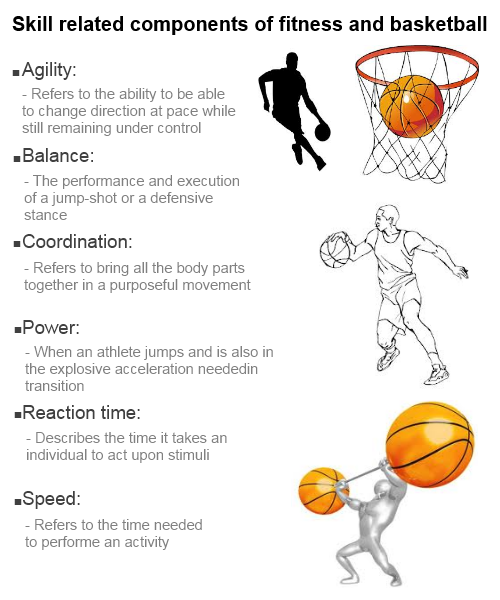
Backpedaling
Backpedaling will primarily activate the quads, and also the glutes, calves, and hamstrings.
As this is another exercise that all of your players have probably done before in some capacity, points of emphasis should be keeping their hips down and reaching back as far as they can to perform each step.
5. Ankle Pops
Ankle Pops should be similar to the motion of jumping rope, but instead your players will move forward with every jump.
The goal is to progressively improve the range of every jump throughout. Emphasize jumping lightly off the toes and keeping knees slightly bent.
While Ankle Pops are a dynamic stretch designed to strengthen the ankles and also work the quadriceps, this is also a chance for your players to work on coordination and rhythm.
6. Butt Kicks
This is another exercise that many of your players have probably done before, so emphasizing technique is important.
Make sure your players keep their ankles, knees, hips, and shoulders facing the direction they are moving, and set the goal of driving their heels up toward their butt as many times as possible over the allotted distance of the exercise.
7. Quad Walk
The Quad Walk is very similar to Butt Kicks, but is instead performed at a walking speed. On each step, players should use their hand to physically pull their heel up to their butt.
This will again loosen up the quadriceps and hip flexors.
8. Over the Fence
To perform Over the Fence, players should face the opposite direction from where they will be traveling.
They should then lift one knee up as high as they can, and rotate the knee backward as though they are trying to step over an imaginary fence behind them.
Alternate legs, traveling backwards for the duration of the exercise. Over the Fence is designed to stretch the hamstrings, groin, and hip flexors.
9. Frankenstein March
One great exercise to work on hamstring flexibility is the Frankenstein March.
Keeping one plant leg straight down, kick the other leg up with the goal of kicking the fingertips on the opposite hand. Then alternate throughout the allotted distance of the exercise.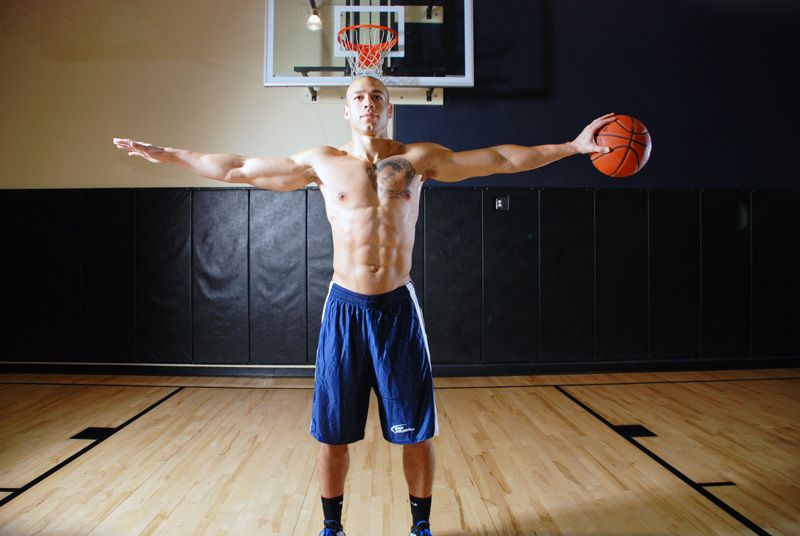
10. Lunges
Lunges are one of the most popular dynamic stretches, and can be a building block for many more exercises. It mimics the running movement that is essential in basketball, and most other sports.
Lunge forward with one leg by bending both knees and keep your trunk upright. Keep moving forward and repeat on the opposite leg.
Make sure the knee is stable during the lunge – keep the knee over the foot – don’t let the knee fall inward.
11. Low Lunges
While the lunges above will be done on the move, Low Lunges will be performed from a stationary position.
Your players should take a long lunge forward as though they are performing a regular lunge, and then bring the elbow of the same knee that’s forward down toward the inside of the ankle, and hold that position for 5-10 seconds.
They should then move their hands to each side of their forward foot and press the heel down toward the ground, and hold that position for 5-10 seconds.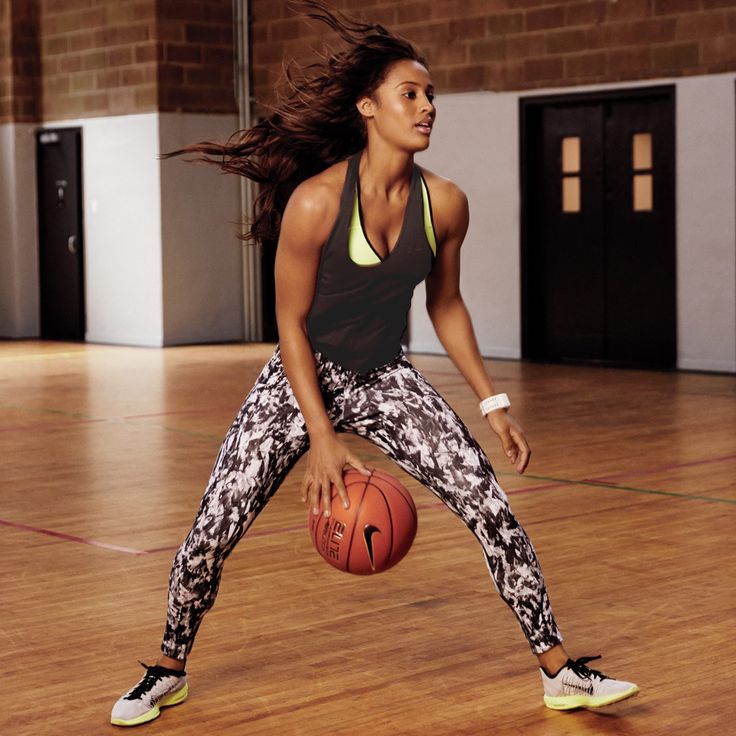 Then stand back up, and repeat on the other leg.
Then stand back up, and repeat on the other leg.
12. Side Slide
With feet a little wider than shoulder-width apart and staying low to mimic a defensive position, your players should step with their lead leg and push off with their plant leg.
This will increase blood flow and also enforce a defensive fundamental.
An emphasis point to focus on is that the feet should never come close to touching each other. In fact, they should always be at least 6 inches apart.
13. Squats
The act of squatting mimics the motion of jumping, which of course is a motion you want your players to be prepared for.
Standing in place with their feet a little wider than shoulder-width apart, your players should drop their hips as low as they can, while also maintaining a straight back and keeping their knees centered over their feet.
14. Carioca
Carioca is meant to improve lateral movement, agility, and footwork. Face sideways and cross the trailing leg in front and then behind, and continue in the sideways direction.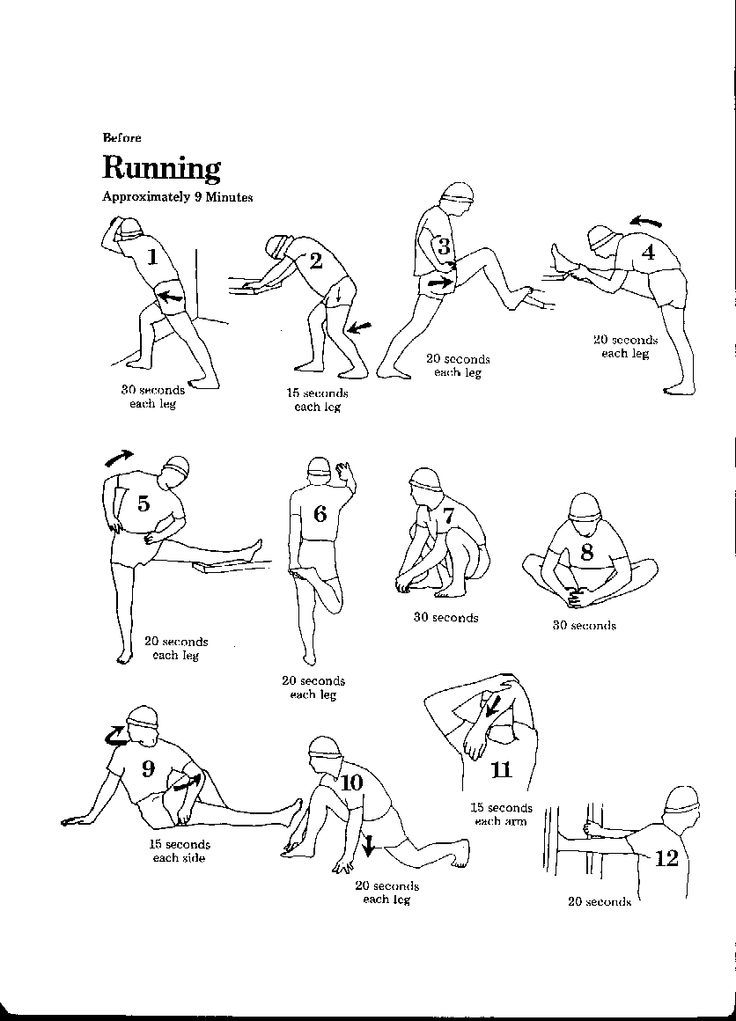
If your players are performing this exercise in a down-and-back format, they should stay facing the same direction coming back as they were going down.
15. Arm Circles
Arm Circles are another common exercise that your players have probably done before.
They should circle their arms forward using small controlled motions, progressively making larger circles. These will get blood moving, and will primarily work the shoulders, triceps, and biceps.
After 10 full Arm Circles forward, they should reverse the direction of the motion for 10 full Arm Circles backward.
16. Walking Lunge with Rotation
Lunge forward with one leg by bending both knees and keep your trunk upright. After you have lunged and your knee is a couple of inches off the ground, rotate your upper body with arms at shoulder level to same side as forward leg
Keep moving forward and repeat on the opposite leg. Make sure the knee is stable during the lunge, keeping the knee over the foot.
17. Inchworm
The Inchworm helps strengthen the muscles in the front half of the body while also stretching the muscles in the back half of the body, and is designed to get blood flowing.
Start with feet hip-width apart. Your players should bend down at the waist, reaching for their toes. After touching their toes, they walk out into a plank.
Once they’re in the plank position, they should drop their hips down and look up. They can then move back up, walking their hands back to their feet. Stand up and repeat.
18. Forward Leg Swings
To do Leg Swings as a team, spread your players out around the gym or whatever space you are in so that they all have their own space against a wall.
Players should reach out and put one hand on the wall for support, and face straight ahead.
Swing either leg forward and back like a pendulum, keeping a tall posture. Start with light, easy swings and progressively increase the range of motion.
They should do 20 swings per leg. This will increase blood flow, particularly to the hamstrings and hip flexors.
This will increase blood flow, particularly to the hamstrings and hip flexors.
19. Lateral Leg Swings
Lateral Leg Swings can easily be paired with the Forward Leg Swings above. This time, your players should be facing the wall and reaching out in front of their body for support.
Swing one leg out to the side, and then back across the body. Again, start with light, easy swings and progressively increase the range of motion.
This will work the hips, and the inner thighs and outer thighs.
20. Glute Walk
As you may have guessed by its name, the Glute Walk is meant to activate the glutes before a workout.
Much like Walking High Knees, players start by lifting one knee up as high as comfortable. If they lift the left knee, then the left hand goes on the left knee, and the right hand goes on the left ankle.
They should then pull their knee and ankle in towards the chest. Take a step, and repeat on the other leg.
The Perfect 5-Minute Basketball Warm Up
There are many more options for basketball stretches that you can implement into your team’s dynamic warm-up, and of course, you will not have time to jam all of them into the preparation for just one workout, practice, or game.
Ideally, you should be able to get your team stretched out using some of the exercises above within 5 minutes. After all, nearly every coach has dealt with limited practice time, and you can not spend all of it on stretching.
In order to maximize time, you should organize the dynamic exercises you want to perform into 3 different groups.
1. Stationary ExercisesOne of those groups is for exercises that are performed while standing in place (Arm Circles, Leg Swings, Low Lunges, etc…).
Spread your players out far enough so they have room to perform the exercises freely, but close enough that they can still hear you. These exercises can be done for 30 seconds each.
2. Slower Pace Exercises
Once you have completed the stationary exercises, line your players up across the baseline, and choose a few exercises that are done on the move, but at a slower pace (Glute Walk, Walking High Knees, Lunges, etc…).
Your players should perform the exercise from baseline to baseline, and then jog back to the original baseline between each exercise. Jogging in itself can also be considered a dynamic exercise.
Jogging in itself can also be considered a dynamic exercise.
3. Faster Pace Exercises
Now that your players are on the move, you can finish your dynamic warm-up with a few of the exercises that are done at a faster pace (Carioca, Butt Kicks, Ankle Pops, etc…).
Regardless of which exercises you choose, your goal should be to find a few within each of those groups that will start your players in a stationary position, and then get them moving, and ultimately to activate multiple muscle groups.
Since there are so many options, it can be great to mix the exercises up within your dynamic warm-up so that your players are not doing the same thing every single day.
Conclusion
A dynamic stretching basketball warm up is something that you can get done in a short amount of time that will have an impact in the immediate future, and also down the road.
Like just about everything else, basketball is evolving, and the process to warm-up to play basketball has evolved as well.
The days of holding one stretch in place for 30 seconds at a time have largely been left in the past, in favor of dynamic exercises that are designed to improve range of motion and mimic the actions your players will use while playing basketball.
Taking 5 minutes every time your team is together to go through a dynamic warm-up will get your players ready to play, it will reduce their risk of injury while playing, and it will better prepare them to perform to the best of their abilities.
Stretching Tips: Keys to a Proper Warm Up
We all know stretching is important, but do you know the proper way to stretch and warm-up before hitting the court?
The idea of stretching may not be top of mind for most youth athletes. However, stretching and properly warming up is extremely important to avoid injury and help you perform at your best.
For basketball players, especially, a combination of both dynamic and static stretches is highly recommended.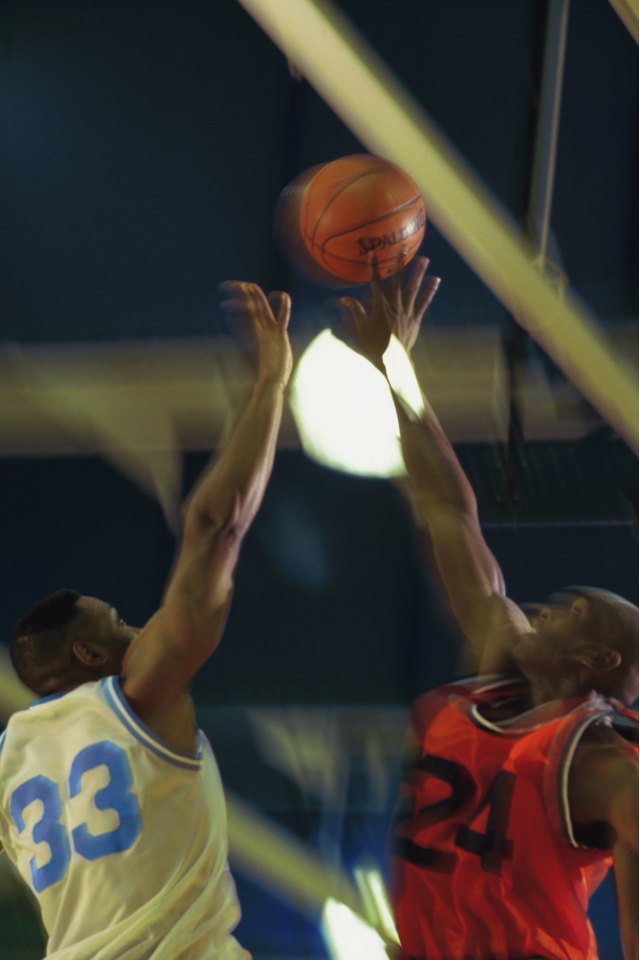 Do you know the difference?
Do you know the difference?
Dynamic stretches are controlled movements that prepare your body mentally and physically for performance while increasing blood flow and oxygen to your body. Static stretches are those in which you hold a single position without movement for a period of time, typically 20-30 seconds.
While both are important, they should be used in combination at different times. Dynamic stretches should be used as part of your warm-up routine before you start playing while static stretches are most effective after workouts as part of your cool-down routine.
Our union members take the time to warm up properly, and we think you should too!
Check out our NBPA Stretching Tips led by NBPA Sports Medicine Director, Dan O’Brien.
This form of stretching helps with an increased range of motion, speed, and agility. Dynamic warm-up exercises get your body prepared for basketball by performing movements that will enhance better body awareness.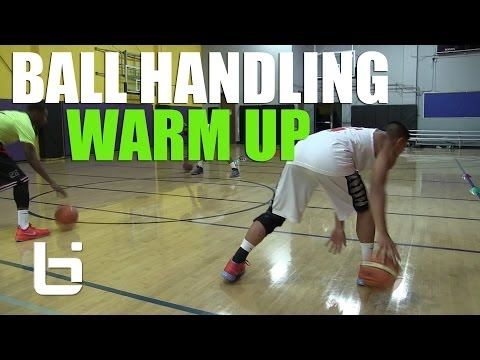 Remember - these should be performed right before you hit the court!
Remember - these should be performed right before you hit the court!
Perform each exercise for :30 seconds
Hamstring Scoops
Start with hands and palms up. Point toes up with heels planted in the ground, reach down and up making a scooping motion with each step. Make sure to keep your back flat. This exercise helps stretch your hamstrings and calves.
Knee Hugs
Pull up from the knee and ankle, hugging the knee and coming up on your toes. Alternate each leg. This exercise stretches your glutes and helps activate the calves when coming up on your toes.
Quad Pull
Pull your leg up behind you (same hand, same leg) reaching up with the opposite hand and holding for 1-2 seconds. Take a step and switch legs. This exercise stretches the quads.
Straight Leg Kick
Hold hands out in front and kick one leg up in the air. Repeat alternating legs with each step. This exercise stretches the hamstrings and calves while also activating the hip flexors.
Forward Lunge With Rotation
Extend arms out in front, lunge forward and twist to side with knee up. This exercise stretches and activates the hip flexors while also helping with knee stability and improving knee pain.
Side Lunge
Lift knee up, lunge to the side, come back to center. Repeat. Keep chest up, back flat. This exercise helps activate the glutes and increase knee stability while also stretching the groin and abductors.
Walking RDL
RDL is short for Romanian Deadlift. Reach forward with both arms, extending 1 leg out behind and keeping back straight. Take a few steps forward and repeat. This exercise helps with hamstring strength and flexibility as well as glute strength and activation.
This exercise helps with hamstring strength and flexibility as well as glute strength and activation.
Side Shuffle
Perform running motion laterally while raising your opposite hand with your opposite knee. This exercise helps you move laterally while getting the hip flexors warmed up and increasing “proprioception” or awareness of the position and movement of the body.
Lateral Bounds
Stand on your right foot with your knee up. Using only the right leg, jump to the left side landing on the left foot. This will help with glute activation and ankle & knee stability.
Static stretching can be done by moving a muscle to the end of its range of motion and holding for a specific period of time - typically 20-30 seconds. This is an effective way to increase flexibility. Remember - these should only be done after a workout during the cool-down phase because static stretching may limit your body’s ability to react quickly.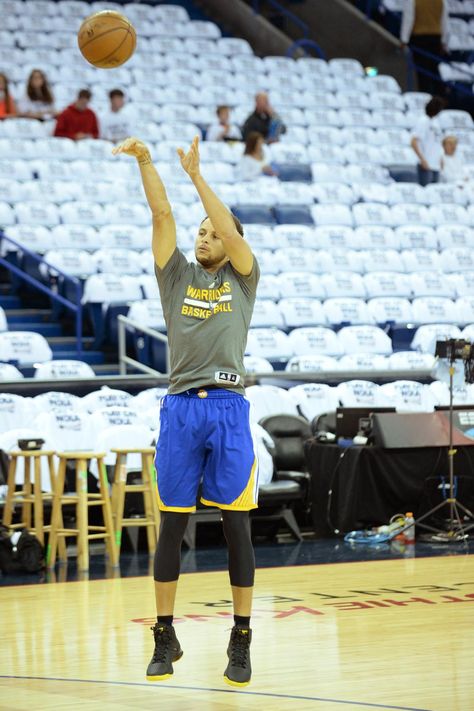
Perform each exercise for :30 seconds
LOWER BODY:
Standing Hamstring Stretch
Bend forward, hinging at the hips, letting arms hang in front towards your toes. This exercise will stretch your hamstrings.
Standing Quad Stretch
While standing, bend your knee back by grasping your ankle with one hand. This exercise will stretch your quads
Butterfly
Bring your feet together and let your knees fall to the floor. This exercise will stretch your groin.
Calf Stretch
Start in a pushup position, drop your heel to floors. This exercise will stretch your calves.
UPPER BODY:
Cross Arm Stretch
Reach one arm across the other and hold
Low Back Stretch
Put right leg behind left, reach across and up with right hand and hold.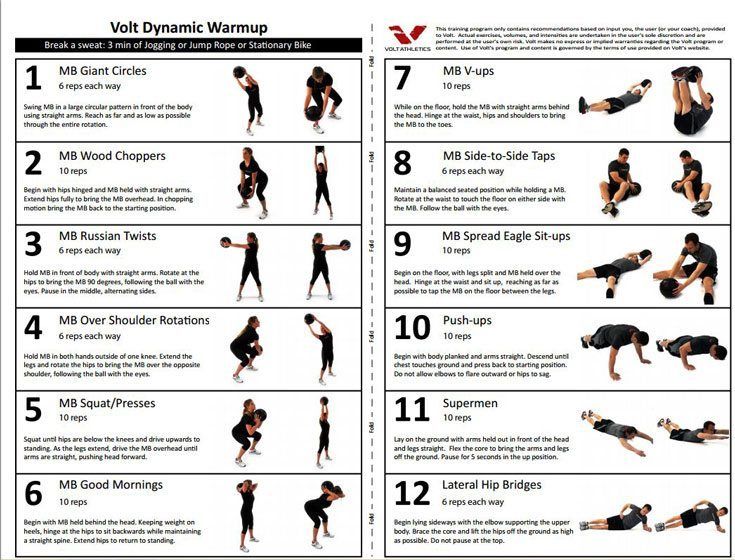
Forward Step & Reach
Starting in push up position, bring right foot up to right hand, lift right hand and look up
To learn more about how to properly prepare your body and your mind for basketball, download the Famer App and join the NBPA Training Ground!
Warm-up before running: basic rules
There are several approaches to running warm-up: someone spends less than 30 seconds on it or skips it at all, and someone does a whole cycle of stretching exercises, which is also not good. Meanwhile, a proper warm-up before running is especially important in the cold season, when the risk of injury increases especially. We've put together some basic pre-run warm-up tips to help you prepare your body for your workout.
Quick walk or light jog
Start with a walk, then speed up and move on to a jog. This will quickly warm up your muscles and increase blood circulation. Many mistakenly skip this stage, starting a workout as soon as they go outside. But an extra 5 minutes of jogging at an easy pace will warm up your muscles and prepare the respiratory and cardiovascular system for the load. And the lower the temperature outside, the longer the warm-up should last so that the muscles have time to warm up and become more elastic.
But an extra 5 minutes of jogging at an easy pace will warm up your muscles and prepare the respiratory and cardiovascular system for the load. And the lower the temperature outside, the longer the warm-up should last so that the muscles have time to warm up and become more elastic.
Self-massage when needed
If you have any problem areas (such as a tight lower back or clogged calves), massage the area with vigorous and light movements, but avoid strong pressure. Your task is to warm up the muscles as much as possible in order to make them more elastic and relieve tension. In addition, if during self-massage you felt not just discomfort, but pain, this is a reason to reduce the load or abandon it before it's too late to prevent injury.
Dynamic stretching
There are two types of stretching: static, where you keep your muscles taut and still, and dynamic, where you stretch your muscles through a set of movements. Before starting a race, especially if it is a competition or a workout that requires maximum effort, it is extremely important for a runner to warm up very well those muscle groups that are used when running: hip flexors, hamstrings, quadriceps, calf muscles.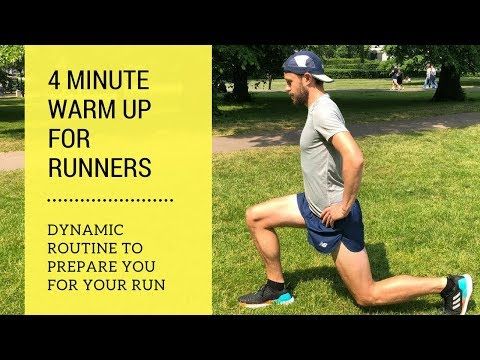 Ideally, pre-workout dynamic stretching should include:
Ideally, pre-workout dynamic stretching should include:
Tilts: Stand with your feet shoulder-width apart and bend towards each leg and down the center.
Hip circles: feet shoulder-width apart, hands on hips. Make slow circular movements with your hips, trying to bend in the lower back as deeply as possible.
Lunges: take several wide steps, bending your front knee at each step, and try to touch the ground with your back knee. Make sure that the knee of the front leg does not go beyond the toe.
Leg swing: standing on one leg, swing forward with the other, then back. Add side swings to the right and left, repeat with the other leg.
Foot warm-up: stretch the feet, focusing on the outside and inside of the foot, also rotate the foot, bending the leg at the knee (the foot may touch the ground or be in the air).
Avoid static stretching before exercise.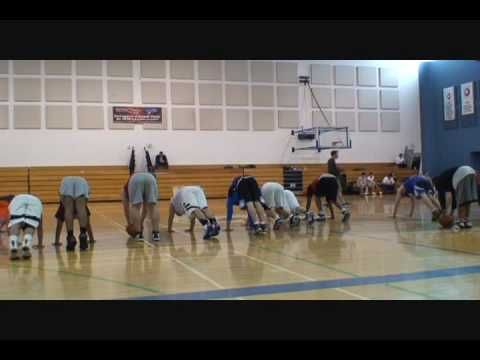 The main task of the warm-up is to warm up the muscles, increase blood circulation and prepare them for explosive work. The purpose of static stretching is the opposite - to relax the muscles and prepare them for recovery. It is important to carry out a static warm-up after a workout.
The main task of the warm-up is to warm up the muscles, increase blood circulation and prepare them for explosive work. The purpose of static stretching is the opposite - to relax the muscles and prepare them for recovery. It is important to carry out a static warm-up after a workout.
SBU - special running exercises as a warm-up before the start
SBU is a set of exercises that are performed on a short distance and allow you to improve running technique and speed qualities of an athlete. In training, the SBU is already performed “on warm muscles”, but at competitions, a set of exercises is performed shortly before the start. Usually this is 5-6 exercises with jogging between each series.
Leg Wrap Run: Run 100-200 meters, kicking your legs back and trying to touch your buttocks with your heel. Keep your back straight and avoid leaning forward too much.
Hip High Run: Run with your hip as high as you can with each stride. At the same time, the hands work like in a run. Make sure your back stays straight and does not lean back.
At the same time, the hands work like in a run. Make sure your back stays straight and does not lean back.
Side steps: run sideways forward, putting the other foot in front of the leading one and keeping the rhythm of the movement. Change side.
Jumps: Jump high with each step, trying to hang in the air with a powerful push with your feet.
Running with straight legs: run without bending your knees, you should have straight legs, a stiff foot. Landing on the forefoot followed by a quick take-off.
In our running club every workout starts with a warm-up. If you want to learn how to properly warm up, come train at the Runlab running club.
how to prepare yourself for training (video)
WARM-UP BEFORE RUNNING: HOW TO PREPARE YOURSELF FOR TRAINING
Warm-up before running comprehensively prepares the body for exercise: metabolism speeds up, the work of the circulatory and respiratory organs, increases the elasticity of muscles and ligaments, into the blood necessary hormones are supplied.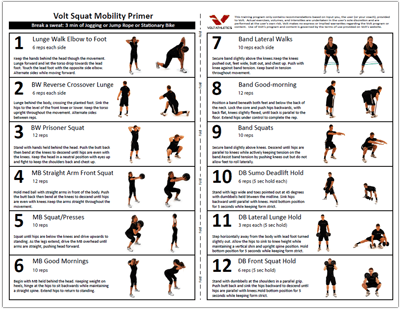
The organs and systems of the body are inert and do not immediately begin to act at the functional level that is necessary for training or competition, which can lead to injuries. After a warm-up, the body responds better to physical activity, the risk of injury is reduced.
We recommend doing a running warm-up after 10 minutes of light jogging, when you have already warmed up a little. In other words: start running, warm up after a few minutes, then continue training. Here are the basic warm-up exercises before running.
Special project Legs and adidas Runners Kyiv
NECK EXERCISES
Feet shoulder-width apart, chin pressed to the neck. Make smooth head movements from the right shoulder to the left and back. Don't tilt your head.
Repeat: 3-5 times.
Turn your head as far to the right as possible. After a couple of seconds, return to the starting position.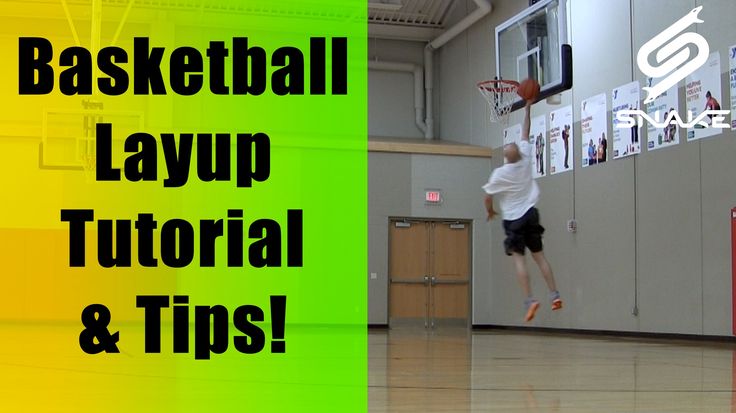 Repeat on the other side. Make sure that the chin is at the same level all the time.
Repeat on the other side. Make sure that the chin is at the same level all the time.
Repeat: 2-3 times in each direction.
Tilt your head down as far as possible and press your chin to your chest so that the muscles in the back of your neck are stretched. Hold this position for a few seconds. Then pull your chin up without tilting your head back.
Repeat: 2-3 times.
SHOULDER CIRCULATION
HEAD ROTATION
HEAD TURN RIGHT AND LEFT
HEAD UP AND DOWN
Slowly move your shoulders back: first up towards your ears, then gradually down. The same in reverse.
Repeat: 5 rotations in each direction 2-3 times.
CIRCULAR MOVEMENTS WITH THE FOREARMS
The exercise is performed with the arms bent at the elbows. Hands need to be extended to the sides, and then perform circular movements with the forearms.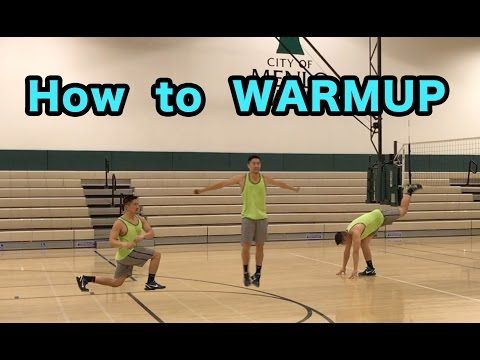
Repeat: 10 times.
ARM CIRCULATIONS / FLOWING
Can be done with one hand, both at the same time or alternately. The amplitude should be maximum, and the pace should be smooth.
Repeat: 10 times.
BODY CIRCULATIONS, PELVIC ROTATIONS
FORERUM CIRCULATIONS
BODY TILT RIGHT AND LEFT
Feet shoulder width apart. The left hand is on the belt, the right hand is extended upwards. Tilt to the left, then switch hands and lean to the right. You can stretch both hands up, taking them into the castle, and do exactly the same inclinations.
Repeat: 10 times.
ARM CIRCULATION
BODY CIRCULATION
Feet shoulder width apart. Lean to the right, and, like a clock hand, continue to smoothly rotate the body in a circle. The pelvis and legs are motionless.
From this position, the pelvis can be rotated, a useful exercise for loosening the area around the sacrum. Slowly make circular movements with the pelvis to the right side, with maximum amplitude, the head remains in place, keep the posture. Then the same on the other side.
Slowly make circular movements with the pelvis to the right side, with maximum amplitude, the head remains in place, keep the posture. Then the same on the other side.
Repeat: 10 torso rotations, 10 pelvic rotations.
SPRING FORWARD
Feet shoulder width apart. Bend over, touching your toes with your hands. Make a couple of smooth slopes - from the right foot to the left and vice versa. Make sure your back is straight and your lunges are not sharp.
Attention: If you have back problems, we do not recommend doing this exercise.
Repeat: 10 times.
ROLL LUNGS
BODY ROTATION, PEL ROTATION
KNEE LIFT
This exercise is useful for warming up and warming up the hip joint. Perform 5 circular movements in one direction, then in the other. Repeat for the other leg.
BODY CIRCLE
Set your feet wide.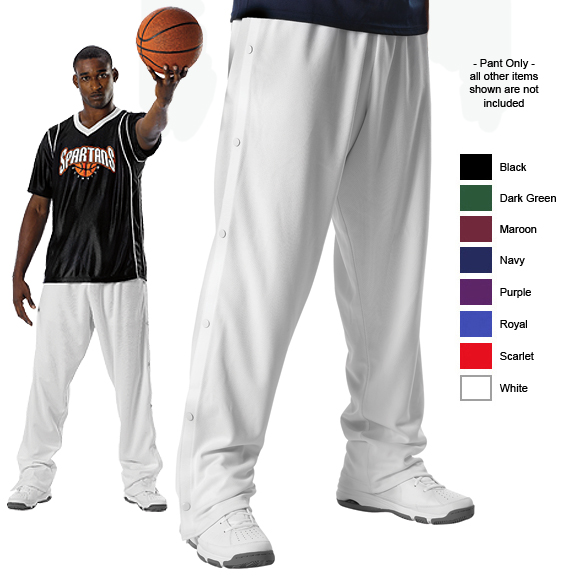 Shift your body weight onto your right leg while bending it at the knee. Then roll onto your left leg, then sit down in a deep lunge.
Shift your body weight onto your right leg while bending it at the knee. Then roll onto your left leg, then sit down in a deep lunge.
From this position, lean forward, then to a straight leg, holding in each position for 5 seconds and making 5 springy downward movements. Feel the stretch in the muscles (back of the legs and abductors). Do the same for the other leg.
Repeat: 2-3 times for each leg.
FOOT EXERCISES
These exercises prepare the ankle joints for stress. Perform circular movements of the foot in each direction 5 to 10 times. Then - 10 times lifting from heel to toe, jumping in place, back and forth and to the sides.
ROLLING LUNCHES
GENERAL RUN PREPARATION
The general warm-up immediately before the start of the run consists of three exercises: running in place with hip raises, shin laps and Jumping Jacks. It is performed to enhance the activity of the cardiovascular system, increase oxygen consumption, and ventilate the lungs.